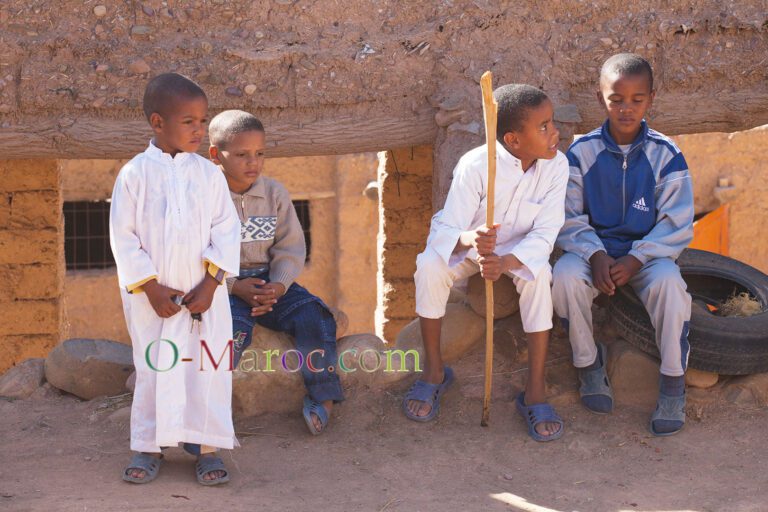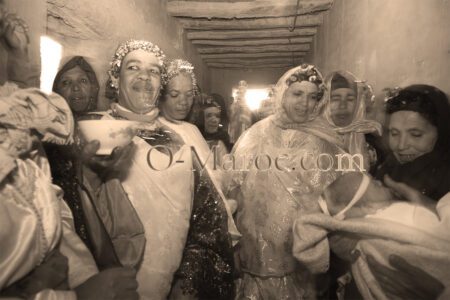Tafaska – ⵜⴰⴼⴰⵙⴽⴰ – is a Berber word meaning both the animal sacrificed and the Eid festival. It is therefore the “feast of sacrifice”, the exact translation of Eid Al Adha. The animal sacrificed is usually a ram (Anougoud – ⴰⵏⵓⴳⵓⴹ), but can also be a billy goat (Aboukir – ⴰⴱⵓⴽⵉⵔ).
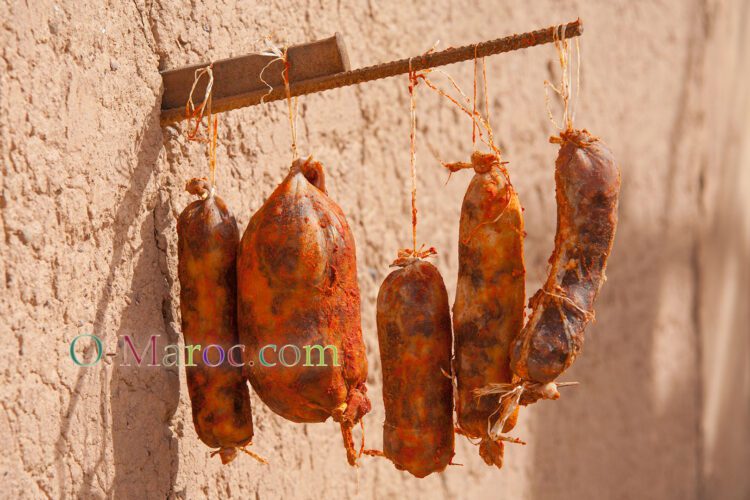
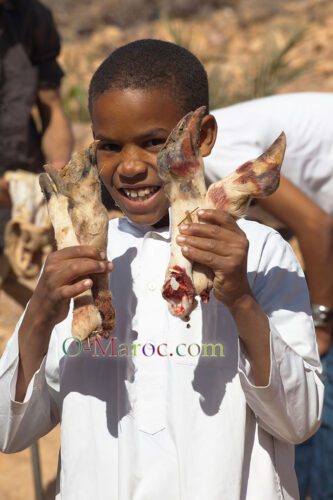
This meat is the first result of the sacrifice: the meat is spiced and prepared to dry іn thе ѕun, which gives the gueddid.
In the height of summer, the women work quickly to prevent the offal from spoiling.
As for the mutton, it is left to hang for one or two days, so that the meat can mature to a minimum, before being transformed into gueddid, kebabs and tajines.
The caul and fat of the mutton are an indication of its quality.
My mother-in-law always paid attention to them, to check that she had done a good job in rearing her animals for several months! (They bought young weaned lambs to feed and grow themselves).
Back home, it was the men who were in charge of butchering the animal (the animals, in fact, because as several heads of family were together, three or four sheep were sacrificed each year).
The boys helped the women with the unappetising task of сlеаnіng оut thе іntеѕtіnеѕ. Or rather, they did most of the work, emptying them and washing them out with plenty of water. Then the women would scrape them out with a knife, to make sure nothing was left inside!
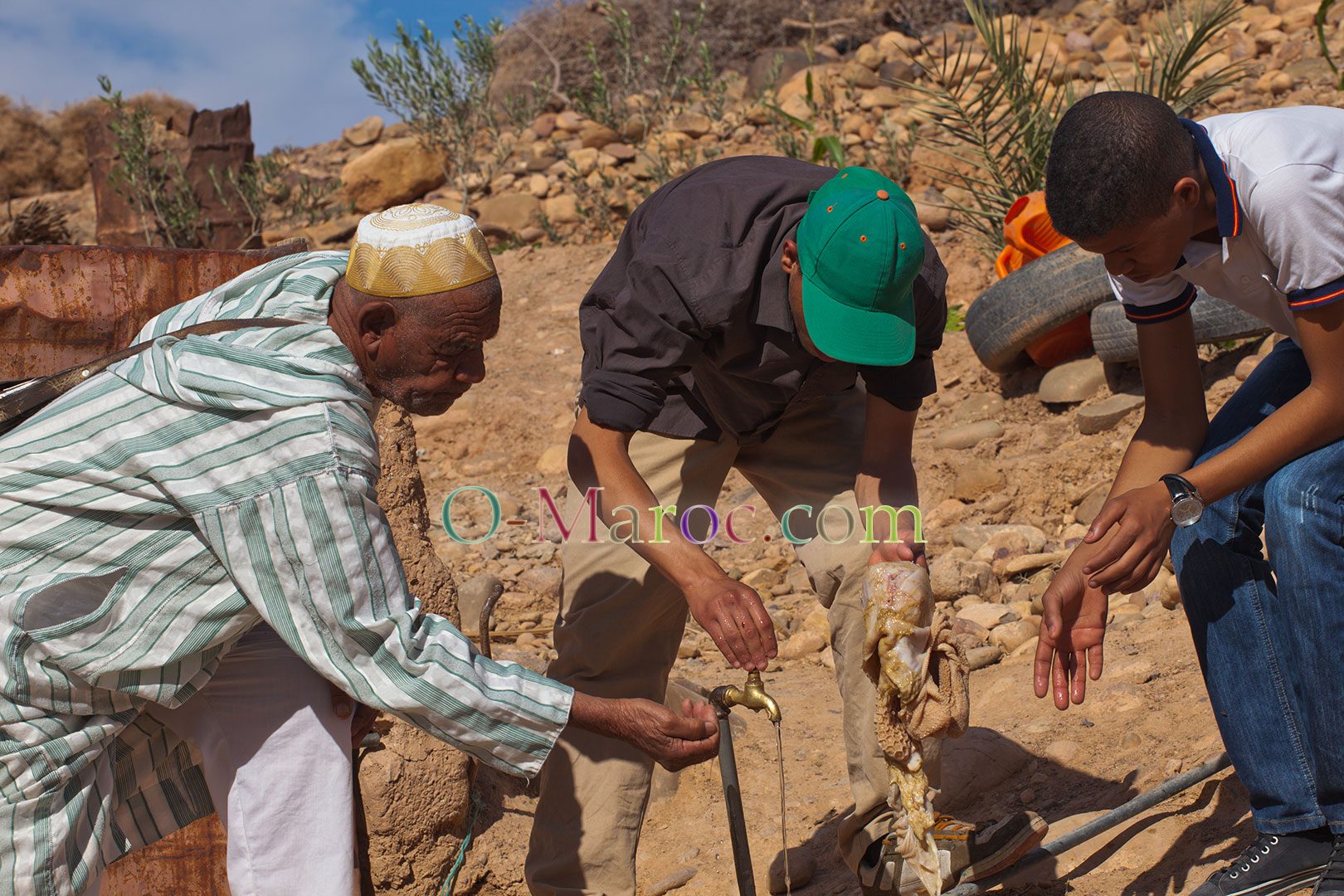
This Eid in Berber country is a real family celebration. It’s also a return to our roots, a far cry from cellophane-wrapped meat in trays, where nothing goes to waste…
I have deliberately not included any ‘shocking’ photos showing the actual sacrifice. For me, they’re much less shocking than factory farms…
And finally, in the afternoon, the men rest and exchange Eid wishes.
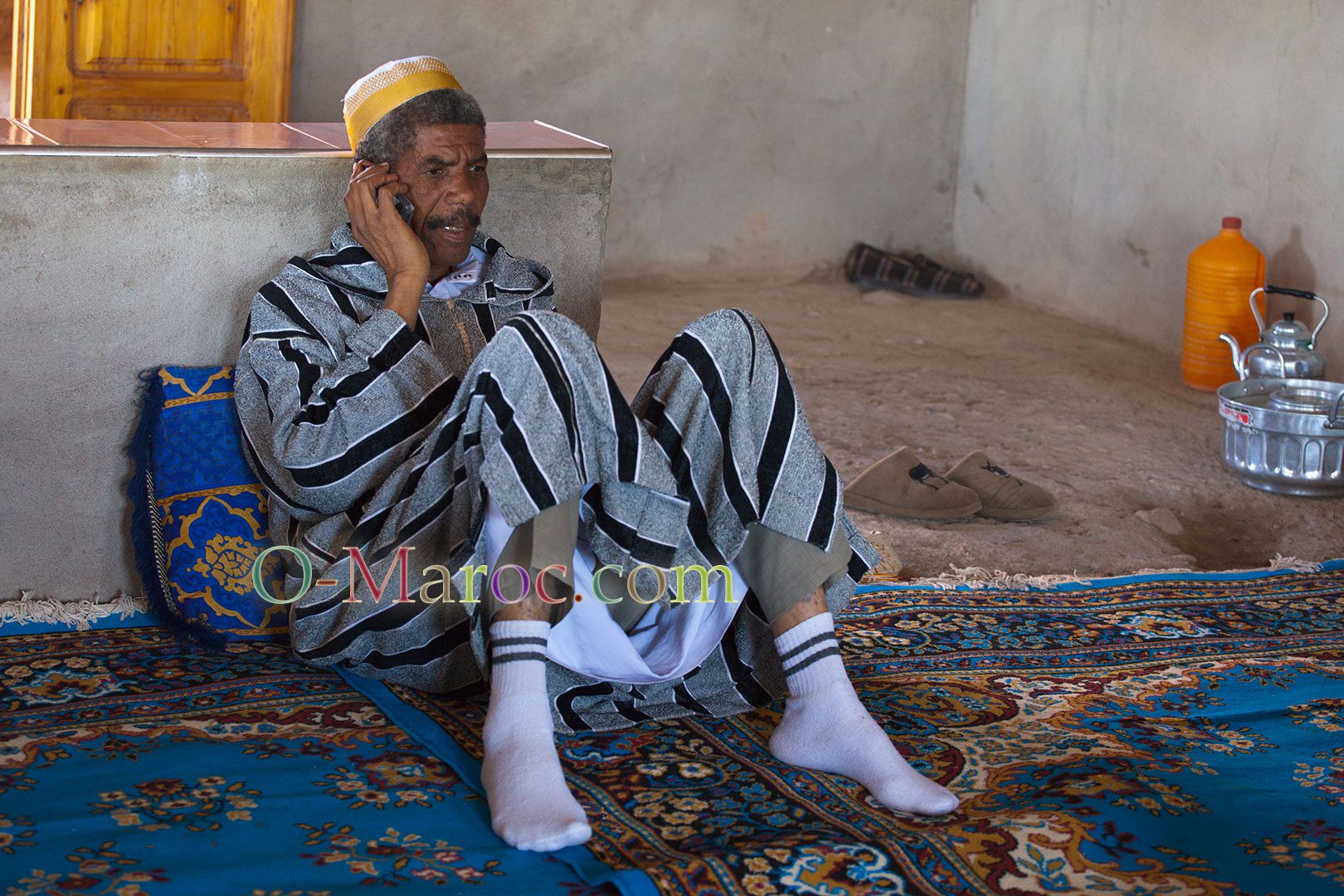
 A typo or syntax error? You can select the text and hit Ctrl+Enter to send us a message. Thank you! If this post interested you, maybe you can also leave a comment. We'd love to exchange with you !
A typo or syntax error? You can select the text and hit Ctrl+Enter to send us a message. Thank you! If this post interested you, maybe you can also leave a comment. We'd love to exchange with you !

